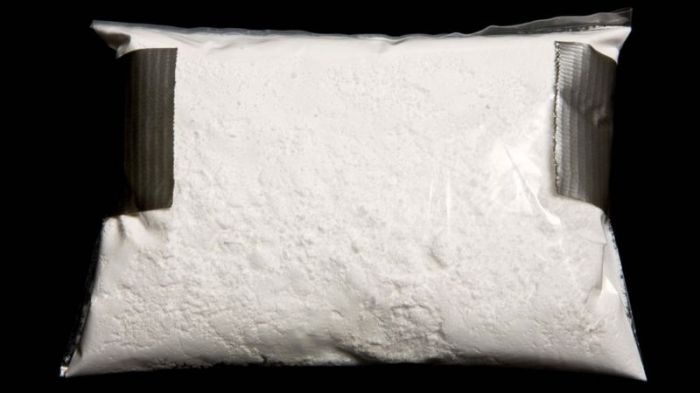How many oz in a kilo of coke? This seemingly straightforward question leads us down a fascinating path of metric units, purity analysis, and real-world applications. Join us as we explore the intricate conversion between kilograms and ounces, uncovering the factors that influence this transformation.
Delve into the world of metric units, where ounces and kilograms dance in a delicate balance. We’ll provide conversion formulas and examples to illuminate their relationship, empowering you with the knowledge to navigate these measurements with ease.
Define the Metric Units Involved

To understand the relationship between ounces (oz) and kilograms (kg) in the context of cocaine, it is essential to define these metric units.
The ounce (oz) is a unit of mass commonly used in the United States and other countries. It is defined as 1/16 of a pound.
The kilogram (kg) is a metric unit of mass defined as 1,000 grams. It is the base unit of mass in the International System of Units (SI).
Conversion Formulas
To convert ounces to kilograms, we use the following formula:
1 kg = 35.274 oz
To convert kilograms to ounces, we use the following formula:
1 oz = 0.0283 kg
Example
For example, if we have 1 kilogram of cocaine, we can convert it to ounces using the following calculation:
1 kg = 1 kg
35.274 oz/kg = 35.274 oz
Therefore, 1 kilogram of cocaine is equal to 35.274 ounces.
Calculate the Conversion
To determine the number of ounces in a kilogram of cocaine, we’ll use the conversion formula and provide step-by-step calculations.
Conversion Formula
The conversion formula to convert kilograms to ounces is:
Ounces = Kilograms x 35.274
Step-by-Step Calculations
To convert 1 kilogram of cocaine to ounces, we use the formula as follows:
- Ounces = 1 kilogram x 35.274
- Ounces = 35.274 ounces
Therefore, 1 kilogram of cocaine is equal to 35.274 ounces.
Factors Affecting the Conversion: How Many Oz In A Kilo Of Coke

The conversion between ounces and kilograms for cocaine is not always straightforward. Several factors can affect the exact number of ounces per kilogram, including density and purity.
Density
Density refers to the mass of a substance per unit volume. Cocaine’s density can vary depending on its physical form, such as powder or rock, and its moisture content. A denser form of cocaine will weigh more per unit volume than a less dense form.
Purity, How many oz in a kilo of coke
Purity refers to the concentration of cocaine in a given sample. Cocaine is often mixed with other substances, such as cutting agents, to increase its volume and weight. The higher the purity of the cocaine, the less it will weigh per unit volume.
Real-World Applications

Converting kilograms to ounces has practical implications in various industries and scenarios. Understanding the conversion allows for accurate measurements and effective communication in these fields.
If you’re wondering how many ounces are in a kilo of coke, it’s about 35.27 ounces. And if you’re curious about who Andrea Mock’s husband is , well, that’s a different story. But getting back to our original question, there are approximately 35.27 ounces in a kilo of coke.
Drug Enforcement
- In drug enforcement, kilograms are commonly used to measure illicit substances like cocaine and heroin. Converting these weights to ounces enables law enforcement officials to quantify the quantity of drugs seized, estimate street value, and determine appropriate penalties.
Pharmaceutical Industry
- The pharmaceutical industry uses kilograms to measure bulk quantities of active pharmaceutical ingredients (APIs). Converting these weights to ounces facilitates precise dosage calculations, ensuring the safe and effective administration of medications.
International Trade
- In international trade, commodities like coffee, tea, and spices are often traded in kilograms. Converting these weights to ounces allows buyers and sellers to compare prices, calculate shipping costs, and ensure accurate fulfillment of orders.
Recreational Activities
- In recreational activities like fishing and hunting, kilograms are used to measure the weight of catches and harvests. Converting these weights to ounces enables anglers and hunters to compare their catches, track their progress, and comply with regulations.
Safety Considerations

Cocaine, a powerful stimulant drug, demands utmost caution in handling and storage. Improper use can lead to severe health consequences.
The highly addictive nature of cocaine makes it imperative to store it securely, away from potential users, especially children. Safekeeping measures should prioritize prevention of accidental ingestion or misuse.
Potential Hazards
- Cardiovascular Risks:Cocaine use can elevate blood pressure and heart rate, increasing the risk of heart attacks and strokes.
- Neurological Damage:Chronic cocaine use can harm brain structures involved in decision-making, memory, and behavior.
- Respiratory Issues:Cocaine can cause respiratory problems, including shortness of breath, chest pain, and even respiratory failure.
- Overdose:Excessive cocaine intake can lead to seizures, coma, and even death.
Popular Questions
Is the conversion between kilograms and ounces the same for all substances?
No, the conversion factor can vary depending on the density and purity of the substance.
How does purity affect the conversion?
Impurities can alter the density of the substance, leading to a different number of ounces per kilogram.
What are the safety precautions to consider when handling cocaine?
Cocaine is a highly addictive and dangerous substance. Proper handling and storage are essential to minimize risks and protect health.